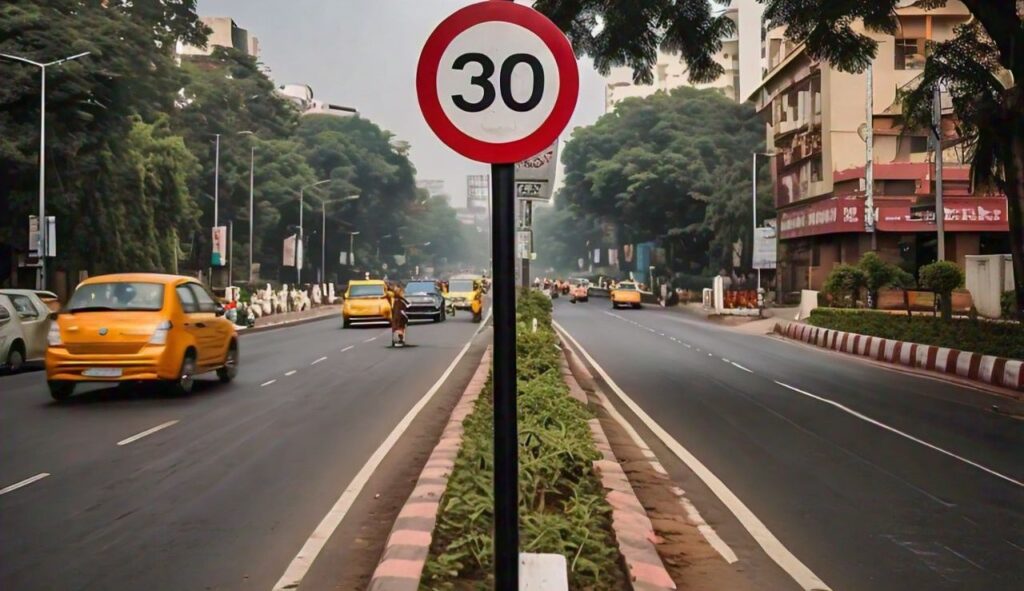India is a rapidly growing country with advanced technology, a growing population, and an active lifestyle. This development also increases the number of vehicles on the road. Ten years ago, the number of cars on Indian roads was very low, but by 2024, the numbers have changed dramatically and are growing rapidly, making driving on Indian roads more challenging due to increased traffic and congestion.
There is no doubt that the roads on the national highways and expressways in India are expanding rapidly to better connect states and regions. However, most commuters still travel on urban roads, rural roads, and urban corridors to markets, offices, cities, and neighborhoods, often using two-wheelers, rickshaws, or public transport.
General Rules for Driving In Indian Roads :
- Current speed limits in India: City roads:40 kmph
- National Highway:60 kmph
- National Highway: 80 kmph
- Highway speeds: 100 kmph
- Vehicle with less than 9 passengers (including driver): Maximum 100 kmph
- Heavy Vehicle (HTV): 80 kmph maximum
Despite these speed limits being specified in the Indian way , many road users tend to exceed them, especially on urban and rural roads, for several reasons:- Why do people exceed the speed limit?
Driving on Indian Roads:
- Congestion: Drivers can compensate for lost time due to traffic congestion with speed.
- Lack of awareness: Many drivers are unaware of speed limits or the dangers of speeding.
- Lack of time: A sense of urgency or haste to meet deadlines.
- Delays at intersections: Some frequent stops at intersections and traffic lights can encourage speeding when the road is clear.
- Driving behavior: Individual tendencies or aggressive driving patterns. Record: Some drivers speed to influence others.
- Thrill seeking: The thrill or adrenaline associated with driving at high speeds.
- The belief that speed is good: The idea that driving faster is more effective than driving slower. Authority of other road users: Some feel the need to assert authority on the road.
- Personal Factors: Personal factors such as mood, stress, or peer pressure.
The consequences of speed, movement can cause many negative effects, e.g. Accidents on the roads Injuries inflicted Permanent disability Destruction of property Death ,These consequences affect not only the speeding driver but also other road users who may be affected by such casual behavior. Also Read : Before or On-time Journey: The Connection Between Time and Road Safety
Who is to blame for it?
Drivers: Reckless or speeding drivers are directly to blame.
Infrastructure: Poorly constructed roads, lack of signage and poor management of traffic are the causes of this issue.
Law Enforcement: Poor enforcement of speed limits and traffic laws allows these behaviors to continue unchecked.
How to control accidents in India?
- Enforcing speed limits: Enforcing increased fines and penalties for speeding and dangerous driving.
- Education and Awareness: To promote road safety and good driving practices from an early age.
- Better infrastructure: upgrading roads, signage and traffic management systems.
- Technology: The use of flying cameras and enforcement systems to monitor and prevent speeding.
- Public transport system reform: Providing safe and effective alternatives to private transport.
It is high time that we all recognize the utmost importance of road safety to ensure a safe environment for every road user in india.


Good
Pingback: Seatbelts for Lifesaving or Just Enforcement @India - Safe Road Life
Pingback: Wrong side driving in India and The psychology of Indian drivers. - Safe Road Life
Pingback: Hydroplaning or Aquaplaning on roads causes and consequences. - Safe Road Life
Pingback: Roadside Markets in India: Convenience vs Safety—The Hidden Danger - Safe Road Life %
Pingback: Before or On-Time Journey: The Connection Between Time and Road Safety - Safe Road Life
Pingback: The Dangers of Night-time Driving in India: Statistics and Prevention - Safe Road Life